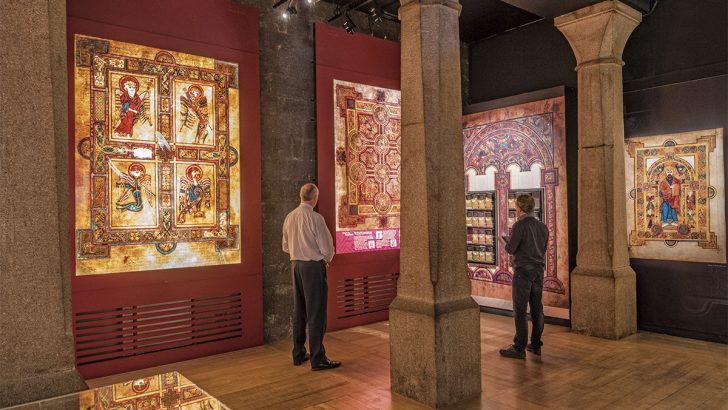The Book of Kells: Official Guide
by Bernard Meehan (Thames & Hudson, £12.95)
Quite aside from all the changes that have overtaken Christianity in Ireland in recent decades, everyone still has to admit that the art of Early Christian Ireland – exemplified by the Ardagh Chalice, the Cross of Cong, the Derrynaflan hoard, and above all the Book of Kells –represent an epoch in the art history of the world.
This book by Bernard Meehan, recently retired Head of Research Collections and Keeper of Manuscripts in the Library of Trinity College Dublin, provides an exact and up-to-date summary of what is known and what remains uncertain about that majestic book on which he is a leading expert. This is a complete revised edition of what the publishers call their ‘all time best seller’.
He provides an account of the early history of the book and its later misadventures, and describes how it is arranged. He describes the structure of the book, which contains the Gospels for ritual use, noting some of the major landmarks in the treatment and decoration. The sources of the text and the inspiration of the illuminations has long been a complex topic. It is one which modern nonintrusive methods of ink and pigment analysis have cast a flood of light.
He also deals with the physical making of the book and exactly how the scribes and the artist worked. Visitors to the exhibition, which provides an excellent introduction with a brief glimpse of a single page, will be lead on to explore the book and its history more deeply. To this end Dr Meehan’s earlier scholarly treatment of The Books of Kells (Thames & Hudson, €75.00) published in 2012 is still available.
Gerald de Barri soon after the Norman invasion alluded to another illuminated Irish book he had seen as the ‘work of angels’.
The Book of Kells is the most famous work of its kind in Ireland, bringing in a million visitors to Dublin it is said.
But the general public is less aware that the library also houses and cares for more than 20,000 manuscripts and archives from many cultures dating from the 13th Century BC up to literary archives and artists’ books of the present day.
Among these treasures is a significant collection of Medieval Latin manuscripts.
There is a charge to see the Book of Kells, but not many people are aware that they can visit gratis the Royal Irish Academy in Dawson Street and see some of their treasures, such as the Cathach of Columcille.
Those other archaeological treasures mentioned above are in the National Museum in Kildare Street.


 Peter Costello
Peter Costello part of the Book of Kells display at Trinity College Dublin
part of the Book of Kells display at Trinity College Dublin 